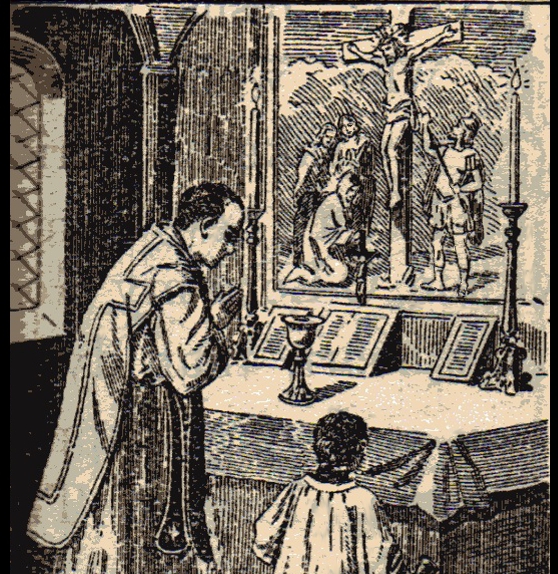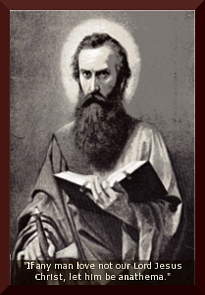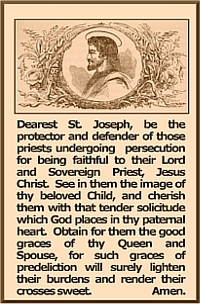 The Ars Orandi blog has posted a couple of essays assessing the “Dialogue” Mass, and I have to say that if Rorate Caeli chooses to sign off as “neutral” on the subject, I in contrast wish to go on record as agreeing with David’s conclusions. I am not an advocate of the Dialogue Mass. I say this, not with disparagement of “dialogue” advocates, but because some of us have tried, have seen, have experienced different methods, and my personal conclusion has been that the most gratifying, most soul-stirring, most prayerful way of assisting at Mass begins by freeing oneself from the constraints of having to vocalize in unison as in the N.O., so as to have liberation of one’s mind and heart. In this way, it is so much easier to pray the Mass in a unitive and meditative way. I hope that my posting of THEOLOGY OF THE TRIDENTINE MASS in pictures will be one aid for those who desire a more intimate way of praying the Mass.
The Ars Orandi blog has posted a couple of essays assessing the “Dialogue” Mass, and I have to say that if Rorate Caeli chooses to sign off as “neutral” on the subject, I in contrast wish to go on record as agreeing with David’s conclusions. I am not an advocate of the Dialogue Mass. I say this, not with disparagement of “dialogue” advocates, but because some of us have tried, have seen, have experienced different methods, and my personal conclusion has been that the most gratifying, most soul-stirring, most prayerful way of assisting at Mass begins by freeing oneself from the constraints of having to vocalize in unison as in the N.O., so as to have liberation of one’s mind and heart. In this way, it is so much easier to pray the Mass in a unitive and meditative way. I hope that my posting of THEOLOGY OF THE TRIDENTINE MASS in pictures will be one aid for those who desire a more intimate way of praying the Mass.
As David writes, really, the dialogue Mass is a poor way of assisting at the Sacrifice: “…When one achieves a deeper appreciation of what “active participation” entails, it becomes clear that, quite to the contrary, other methods of hearing Mass are more beneficial for those striving to unite themselves more intimately with the mysteries represented in the Mass. “…it [dialoguing] is a poor method of hearing Mass,…”
Here are some other highlights of his essay:
“the Dialogue Mass is a novelty of the 20th century rather than a product of any previous generation…and “it was practiced as an innovation, among so many others, by the movers of the 20th Century Liturgical Movement.”
“The Dialogue Mass does not appear in any official Church documents until 1958 with the instruction, De musica sacra et sacra liturgia,…”
“It should be noted for historical clarity, that the same person who was responsible for crafting much of what became the novus ordo, was also responsible for De musica sacra et sacra liturgia [instructions for the Dialogue Mass], Archbishop Annible Bugnini.”
[Quote from Eamon Duffy’s The Striping of the Altars]: “This tradition, embodied in such works as the Meditationes Vitæ Christi, stressed the spiritual value of vivid mental imagining of the events of the life of Christ, especially his Passion, to ‘make hym-selfe present in his thoghte as if he sawe fully with his bodily eghe all the thyngys that be-fell abowte the crosse and the glorious passion of our Lorde Ihesu.’ This search for spiritual communion with God through vivid picturing of the events of Christ’s life and death was, of course, evolved as part of an individual and intensely inner spirituality. But it came to be applied to the liturgy itself, and to be seen as the ideal way of participating in the Church’s worship.”
The intent of the essay is summarized thus:
“It is equally imperative that the laity educate themselves and their neighbors about traditional liturgical piety that renders the most fitting worship possible, and renders the greatest benefits, such as unitive prayer and contemplation.”
To which I might add, “…just like our Blessed Mother at the foot of the cross.”




6 Responses to The Dialogue Mass – No Neutrality Here